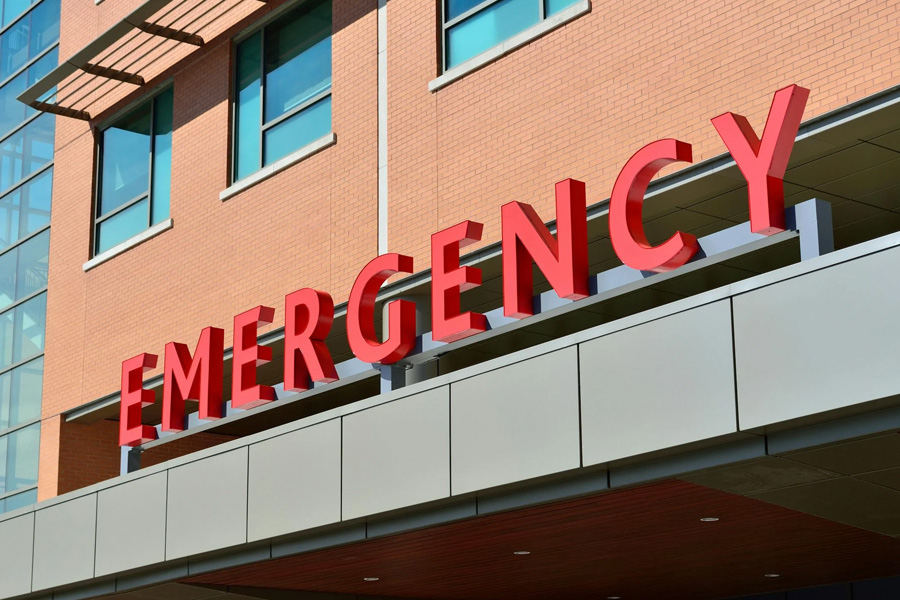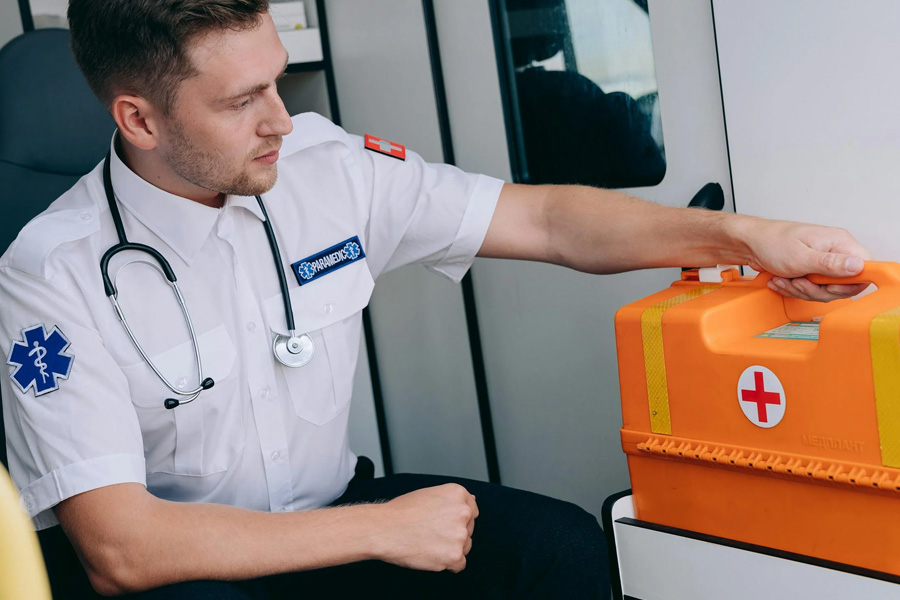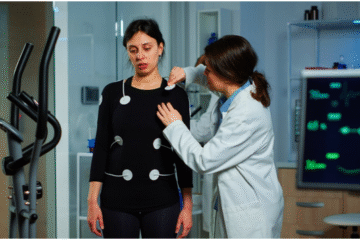Emergency Response Planning for Healthcare Facilities: Best Practices and Training Solutions

Keeping patients and staff safe during emergencies is paramount in any healthcare facility. A well-defined emergency operation plan (EOP) and comprehensive staff training are the cornerstones of effective response.
Continue reading to look into the key elements of an EOP, best practices for smooth emergency response, and essential safety training courses to equip your healthcare facility for any situation.
6 Key Elements of a Healthcare Facility’s Emergency Operation Plan (EOP)
A well-crafted Emergency Operation Plan (EOP) serves as the central nervous system for your hospital’s response to any crisis.
It outlines clear procedures, establishes roles and responsibilities, and ensures a coordinated effort to protect patients, staff, and the facility itself.
Here’s a deep dive into the six key elements that form the foundation of a strong EOP:

1. Hazard Identification and Risk Assessment
This is the starting point for your EOP. Here, you meticulously identify all potential hazards your hospital could face. These can be internal threats like fire or medical equipment malfunctions or external threats like natural disasters, power outages, or even hazardous material spills.
Conducting a thorough risk assessment involves evaluating the likelihood of the hazard occurring, the potential severity of its impact, and any vulnerabilities your hospital might have that could worsen the situation.
Based on your risk assessment, prioritize the hazards based on likelihood and severity. Allocate resources and focus your EOP on effectively addressing the most critical threats.
2. Incident Command System (ICS)
The ICS establishes a clear chain of command during emergencies. It defines roles and responsibilities for each member of the response team, ensuring everyone knows their place and can act swiftly and efficiently.
It utilizes a standardized framework, facilitating communication and collaboration not just within your hospital but also with external emergency responders who might be using the same system.
The ICS is designed to be scalable. It can adapt to different emergencies and the size of the response required.
3. Emergency Procedures
This section of your EOP outlines specific procedures for various emergencies you’ve identified in your risk assessment. The focus here is on clarity and conciseness. Procedures should be easy to understand and follow, even under pressure.
Break down procedures into clear, step-by-step instructions. Include specific actions for different roles within the ICS, such as evacuation procedures for staff and patients, sheltering-in-place protocols, and guidelines for maintaining critical medical care during emergencies.
Consider incorporating decision trees for specific situations. These flowcharts can guide staff through a series of questions to determine the most appropriate course of action during an unfolding emergency.
4. Communication Plan
Effective communication is paramount during emergencies. Your EOP needs a robust communication plan that ensures timely and accurate information reaches everyone who needs it.
Don’t rely on a single communication method. Integrate a multi-layered approach that might include phone trees, mass notification systems, public address announcements, designated runners, and even social media for external updates (depending on the situation).
Build redundancy for critical communication channels. For example, have a backup phone system or designate secondary personnel to handle alerts if primary responders are unavailable.

5. Resource Management
Identify and allocate critical resources your hospital will need during emergencies. This includes medications, medical supplies, equipment, blood products, and even necessities like food, water, and sanitation supplies.
Develop a plan for stockpiling essential supplies based on your risk assessment and potential emergency durations. Regularly review and update inventory levels to ensure preparedness.
Assign clear responsibility for managing and deploying resources during emergencies. This ensures efficient allocation and prevents critical shortages.
6. Plan Review and Training
An EOP is not a static document. Schedule regular reviews to incorporate lessons learned from drills, address changes in the facility or surrounding environment, and update protocols based on best practices.
Conduct regular emergency drills that simulate various scenarios identified in your EOP. Drills help staff become familiar with procedures, identify areas for improvement, and boost overall confidence in their ability to respond effectively.
Integrate ongoing training programs on emergency preparedness for your staff. This could include first aid training, fire safety training, and specific training on using equipment or procedures outlined in your EOP.
5 Best Practices to Ensure Smooth Emergency Response for Healthcare Facilities
A well-defined emergency operation plan (EOP) is a crucial foundation, but it’s only the first step.
Here are five best practices to refine your healthcare facility’s emergency response and ensure a smooth, coordinated effort during any crisis:
1. Open Communication Channels
Clear and consistent communication is the lifeblood of a successful emergency response. Here’s how to achieve it:
- Utilize a combination of overhead announcements, pagers, two-way radios, and a mass notification system (MNS) to reach staff wherever they are in the facility.
- Establish a clear chain of command and designate a spokesperson to deliver official updates and instructions. This helps avoid confusion and ensures everyone receives consistent information.
- Train staff on active listening skills to ensure they understand instructions clearly, especially during high-stress situations.
- If your facility serves a diverse population, consider incorporating translated materials or multi-lingual communication strategies into your EOP.
2. Delegate Tasks Effectively
Chaos can quickly erupt during emergencies. Here’s how to keep things organized:
- Ensure staff members are trained on their specific roles within the Incident Command System (ICS) framework. This could include incident commander, evacuation zone leader, medical team lead, or patient care provider.
- Identify staff strengths and assign roles accordingly. A nurse experienced in critical care might be ideal for a triage team, while someone with security experience could manage crowd control.
- Utilize vests, badges, or other visual cues to identify staff members’ designated roles during an emergency. This streamlines communication and helps staff quickly understand who to report to.
3. Practice Makes Perfect
Regular emergency drills are vital for building muscle memory and ensuring staff familiarity with the EOP. Here’s how to make drills effective:
- Don’t just practice fire drills. Run drills for different types of emergencies like natural disasters, power outages, active shooter situations, or hazardous material spills.
- While some scheduled drills are necessary, incorporate unannounced drills to assess real-time response capabilities under pressure.
- After each drill, conduct a thorough debriefing to identify areas for improvement, address concerns, and reinforce key learnings.
4. Invest in Technology
The right technology can significantly enhance communication and streamline emergency response:
- Utilize an MNS to send instant alerts and instructions to staff via text messages, emails, or voice calls, regardless of location within the facility.
- Implement digital signage displays throughout the facility to broadcast emergency updates and evacuation routes in real-time.
- Consider software solutions designed to manage emergency response. These can track staff location, manage resource allocation, and facilitate communication during an event.
5. Maintain a Culture of Safety
A safety-conscious environment fosters preparedness and empowers staff to act effectively in emergencies:
- Conduct regular inspections to identify and address potential hazards within the facility.
- Encourage staff to report all safety concerns and near misses. Investigate incidents thoroughly and implement corrective actions to prevent future occurrences.
- Recognize and reward staff members who demonstrate safety awareness and proactive behavior.
Occupational First-Aid Training Levels 1, 2, and 3 Courses for Healthcare Facilities
Equipping your healthcare staff with the right knowledge and skills is essential for creating a safe working environment and minimizing the risk of injuries.

Here’s a closer look at three crucial occupational safety training courses that benefit healthcare facilities:
Occupational First-Aid Level 1 (8 hours)
- Emergency Scene Assessment
- Basic Life Support (BLS) CPR (adults)
- Bleeding Control with Direct Pressure & Pressure Points
- Choking Management (Heimlich Maneuver)
- Minor Injury & Illness Management (burns, sprains, allergies, common illnesses)
Occupational First-Aid Level 2 (36 hours)
- Advanced CPR Techniques (infants, children, bag-valve mask)
- Automated External Defibrillator (AED) Use
- Respiratory Emergencies (choking in adults & infants, asthma attacks)
- Wound Management (cleaning, dressing, bandaging)
- Fracture & Sprain Immobilization (slings, splints)
- Shock Recognition & Response
Occupational First-Aid Level 3 (72 hours)
- Advanced Airway Management (airway adjuncts)
- Anaphylaxis Management (epinephrine auto-injector)
- Severe Bleeding Control (potential tourniquet use based on regulations)
- Burn Management (chemical & electrical burns)
- Traumatic Injury Management (head injuries, spinal cord injuries)
Note: This is a general overview – find the specific course content here. Always ensure your chosen program meets the requirements for your healthcare facility and staff roles.
Benefits for Healthcare Facilities
- Empower staff to respond quickly and effectively to medical emergencies involving patients, colleagues, or visitors.
- Improves patient outcomes by providing crucial care before advanced medical intervention arrives.
- Fosters a culture of safety and preparedness within the facility.
The Occupational Safety and Health Administration (OSHA) recommends that healthcare employers provide first-aid training to all employees and that workers who may need to use these skills more often.
If you’re looking for Occupational First-Aid Level 1, 2, or 3 courses for your healthcare facility’s employees, consider reaching out to Metro Safety Training today! They offer a variety of course schedules, including evenings and part-time, to accommodate busy staff schedules.
Contact their team of experienced professionals who deliver engaging and practical training sessions, and establish a safer healthcare facility for everyone now!
Leave a reply
You must be logged in to post a comment.












